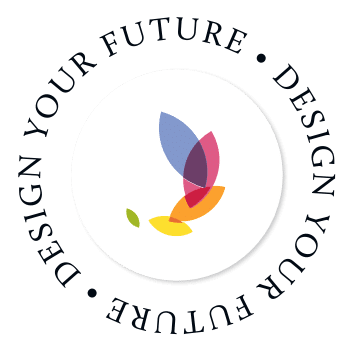“I want something better.” I hear this phrase from people often, especially when uncertainty is on the horizon. “Better” can be an emotionally laden word because it requires you to acknowledge the bitterness that something in your life is not working. Yet you must also have the sweet optimism that something different could satisfy whatever void you have been feeling.
As someone who has guided hundreds of bright and talented clients through change adventures, I believe learning how to change your life for the better is a vital skill everyone deserves to possess. So, I want to share a few guiding principles and essential questions you can ask yourself to ensure that the changes you make will provide the impact you crave.
Why is Intentional Change Important?
First, it can be helpful to understand that there are two primary types of change: reactive change and intentional change.
Reactive change taps into our fundamental drive to avoid discomfort by seeking short-term solutions to an immediate challenge. For example, I’ve seen this happen in a few cases where someone removed themselves from a commitment (such as a committee or a job) because they felt ignored or rejected by a group that didn’t immediately agree with their vision. The motivators for reactive change are usually anger, fear, or resentment, and it is sometimes a response to something that happens to you – a layoff, a breakup, or another force that is out of your control.
Intentional change, on the other hand, is more controlled. You still acknowledge the feelings inspiring the change, but before moving forward, you pause and consider what is and isn’t working. Then, you map out all the possible directions, no matter how improbable you might think they are, and determine a strategy.
The most critical thing about making an intentional change is determining why you feel the way you do about the situation or the change itself and examining any culturally inherited messages influencing your thinking or prospective behavior. Intentional change is important because it involves developing an awareness of what triggered your reaction so you can create an informed strategy from a position of power and clarity vs. emotion. That makes it more likely that you will be satisfied with the results in the long term.
Why Do People Resist Change

Interestingly, sometimes you do this mental work yet find yourself unable to move forward because the idea of change can be scary, especially if it means you must acknowledge a bad habit, a mistake, or step outside your comfort zone. However, the prospect of change is usually more frightening than the change itself.
My clients often ask me, “What if I make the wrong choice?” To which I respond, “What makes a choice wrong?” Upon consideration, most say they are fearful that something truly catastrophic will happen.
When this is their response, I ask them two more questions: “What will you do if this catastrophic thing occurs?” Then, “What is the likelihood that this will happen?” In nearly every instance, they realize that the likelihood of a catastrophic event is incredibly low, and, more importantly, they now have a plan for how to deal with it.
The most critical thing is to remember that change can be not only intentional, but iterative. You can put any negative thoughts aside and embark on the journey with the information you have available, adjusting one situation or habit at a time. Then, as more information becomes evident, you can adjust your strategy, even if it means you will end up somewhere different from where you initially thought you wanted to go. Indeed, you may end up someplace even better.
How to Change Your Life for the Better
Once you decide to change your life for the better, there are three guiding questions that you can ask yourself to help start the process:
1. What does better mean?
Many people begin by envisioning their “ideal” circumstances. Then, they set a goal and move toward that. However, if you really want to improve your life, you must first determine the root of the problem. So, instead, consider asking yourself what you don’t want first. Identifying what you don’t want can often be much easier, and then you can ask what it means for the situation to be “better.”
For instance, imagine you want to spend less time on social media. Instead of just setting a time limit for yourself, consider why you think this matters in the first place. Is it that you don’t want to expose yourself to feeling left out? If so, maybe instead of setting a time limit, commit to reaching out to a friend once or twice a week and making plans to get together.
2. What is driving this desire for change?
It can also help to explore whether you are about to invest time and effort into a reactive change (an instinctive attempt to avoid pain and seek pleasure) or an intentional change. Is it about boredom, the end of a growth or learning process, or something different? What emotions come up for you as you honestly examine these questions? By analyzing your answers, you can shift from reactive to intentional change.
3. What’s my guiding question?

Start with a question that you want answered. Then, explore the change with a sense of curiosity by setting small, achievable goals that you can easily build into your daily routine. That can help you reduce the weight of the change (making it less scary) so you can be more decisive.
For example, think about ways you can get answers to your question. There may be friends, family members, or colleagues you would like to chat with. Or, you can explore the different possibilities by engaging in trial runs for a limited amount of time. It doesn’t need to be an extensive investigation; just jot down what you think it will take to gather enough information to set a direction and start living the life you want to live.
Again, please note that I did not recommend starting by creating a vision or identifying precisely what you want to do. Instead, use these questions to build awareness so that any change you ultimately decide to make will be deliberate.
The Bottom Line
Change is an essential part of life, so it is well worth figuring out how to change your life for the better gracefully. The first steps are determining whether the change you are considering will be reactive or intentional and then clarifying what “better” means to you. For more change tips, check out this article on positive change, or read my book to learn how to design your change process yourself.





